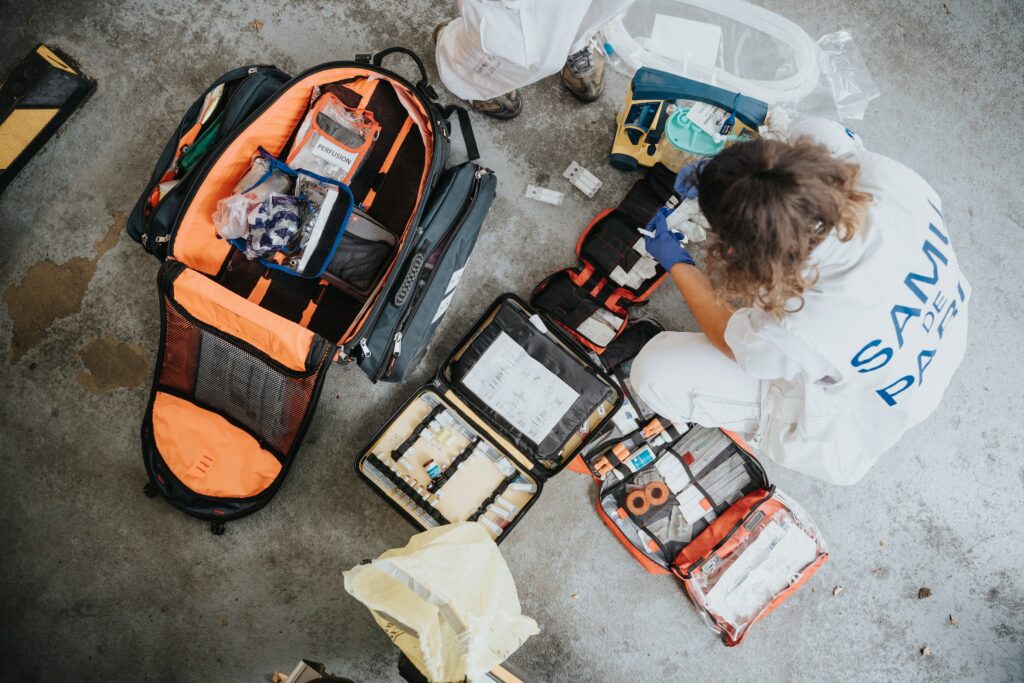Have you ever wondered what it takes to become a paramedic in Australia? It’s a challenging yet rewarding career, offering the opportunity to make a real difference in people’s lives. In this in-depth guide, we’ll explore the steps on how to become a paramedic, the skills you’ll need, and the expected job responsibilities.
But before we dive into this wonderful career, let’s quickly look at the responsibilities associated with this career path.

Job Responsibilities of a Paramedic in Australia:
In Australia, the job responsibilities of a paramedic include:
- Performing clinical procedures and administering drugs.
- Maintaining patient records.
- Deciding on the most appropriate medical facility where someone should be taken.
- Providing help in non-life threatening situations, such as sporting injuries or routine transport between hospitals and health services.
- Operating in various community, industrial, resource sector, education, defence, or event/public gathering settings.
- Playing a key role in the response phase of major incidents or natural disasters such as bushfires or floods.
- Delivering health care within austere environments and on or in various platforms, such as on land (on foot or in-vehicle), aerospace, or ships.
- Attending in situations ranging from a controlled environment to routine and emergency medical management where a paramedical response is required.
- Taking professional responsibility for the mentoring and support of students and developing paramedics.
Due to different legislative frameworks in Australia, it’s important to note that the scope of practice for individuals engaged within paramedicine varies between jurisdictions, practice settings, and engaging organisations.
Now, Let’s get to the real stuff.
How to Become a Paramedic:
To become a paramedic in Australia, you need to follow these steps:
- Obtain a full driver’s license.
- Complete a Bachelor’s degree in Paramedicine or Paramedic Science. This degree typically takes three years to complete full-time at a recognised university.
- Register with the Paramedicine Board of Australia via the Australian Health Practitioner Regulation Agency (AHPRA).
- Renew your annual AHPRA registration by demonstrating mandatory Continuing Professional Development (CPD).
There are also alternative pathways to becoming a paramedic. For instance, if you don’t have the right grades for direct entry into a bachelor’s degree or want to enhance your knowledge before embarking on the degree, you can complete the HLT51020 – Diploma of Emergency Health Care. It is an 18-24 month-long blended learning course, completed partially online and face-to-face at Clinical Workshops and Clinical Placement.
Another pathway is to start with a TAFE course and transition into your degree. This pathway includes completing a Certificate III in Non-Emergency Patient Transport HLT31120, a Diploma of Emergency Health Care HLT51020, and a Bachelor of Paramedicine.
You can apply for paramedic positions once you’ve completed your education and registration. It’s important to note that paramedics need strong communication skills and the ability to perform clinical tests and procedures, administer drugs, maintain patient records, and decide on the most appropriate course of action for a given situation.
Average Salary of a Paramedic in Australia:
The average salary of a paramedic in Australia varies depending on the source. According to Talent.com, the average salary is $94,223 per year. Indeed reports an average salary of $87,129 per year. SEEK suggests that the annual average wage for paramedic jobs in Australia ranges from $100,000 to $120,000. However, these figures can vary based on experience, location, and specific roles within the paramedic field.
Difference between an Ambulance Officer and a Paramedic:
In Australia, the terms “Ambulance Officer” and “Paramedic” are often used interchangeably, but there are some differences.
A Paramedic is a legally protected term used by those with the relevant training and registration. They are highly trained emergency health care professionals who are usually the first to arrive on the scene of an emergency. Paramedics perform clinical procedures, administer drugs, maintain patient records, and decide on the most appropriate medical facility where someone should be taken.
On the other hand, the term “Ambulance Officer” is more general and can refer to various roles within the ambulance service, including paramedics. However, not all ambulance officers are paramedics. Some ambulance officers may transport patients to and between hospitals and work at the location of accidents, emergencies, and requests for medical assistance.
In essence, all paramedics can be considered ambulance officers, but not all ambulance officers are paramedics. The specific roles and responsibilities can vary depending on the jurisdiction and the specific role within the ambulance service.
Frequently Asked Questions:
How long does it take to become a paramedic in Australia?
It typically takes three years to complete a Bachelor’s degree in Paramedicine or Paramedic Science, followed by registration with the Paramedicine Board of Australia.
Can I become a paramedic without a degree?
What are the working hours like for a paramedic?
Paramedics typically work long shifts, which can be both physically and mentally demanding.
Conclusion:
In conclusion, becoming a paramedic in Australia is a challenging yet rewarding journey. You can make a real difference in people’s lives with the right qualifications, skills, and attributes. So, if you’re up for the challenge and have a passion for helping others, it’s time to hit the road and start your journey towards becoming a paramedic!




